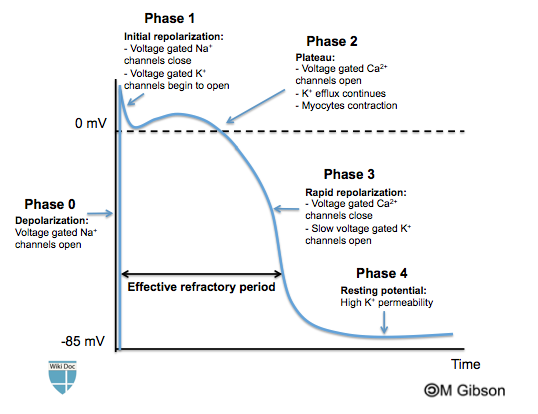WBR1015: Difference between revisions
Jump to navigation
Jump to search
Rim Halaby (talk | contribs) (Created page with "{{WBRQuestion |QuestionAuthor={{Rim}} |ExamType=USMLE Step 1 |MainCategory=Physiology |SubCategory=Cardiology |MainCategory=Physiology |SubCategory=Cardiology |MainCategory=Ph...") |
m (refreshing WBR questions) |
||
| (4 intermediate revisions by 2 users not shown) | |||
| Line 1: | Line 1: | ||
{{WBRQuestion | {{WBRQuestion | ||
|QuestionAuthor={{Rim}} | |QuestionAuthor= {{Rim}} (Reviewed by Serge Korjian) | ||
|ExamType=USMLE Step 1 | |ExamType=USMLE Step 1 | ||
|MainCategory=Physiology | |MainCategory=Physiology | ||
| Line 8: | Line 8: | ||
|MainCategory=Physiology | |MainCategory=Physiology | ||
|SubCategory=Cardiology | |SubCategory=Cardiology | ||
|MainCategory=Physiology | |||
|MainCategory=Physiology | |MainCategory=Physiology | ||
|MainCategory=Physiology | |MainCategory=Physiology | ||
| Line 20: | Line 21: | ||
|MainCategory=Physiology | |MainCategory=Physiology | ||
|SubCategory=Cardiology | |SubCategory=Cardiology | ||
|Prompt= | |Prompt=A pharmaceutical company is developing a new anti-arrhythmic drug that targets the slow voltage gated potassium channels. During which of the following phases of the action potential (depicted below) is this drug most active? | ||
[[File: | [[File:WBR1015.png]] | ||
|Explanation=The ventricular action potential is composed of four phases: | |Explanation=The ventricular action potential is composed of four phases: | ||
* Phase 0 (depolarization): abrupt opening of the voltage gated sodium channel | |||
* Phase 1 (early repolarization): closure of the sodium channels and opening of voltage gated potassium channels | |||
* Phase 2 (plateau): opening of the voltage gated calcium channels leading to an influx of calcium that balances the potassium efflux | |||
* Phase 3 (rapid repolarization): closure of the calcium channels and opening of the slow voltage gated potassium channel | |||
* Phase 4 (resting potential): high potassium permeability through the potassium channels | |||
The image below details the different phases of the ventricular action potential. | |||
[[File:Ventricular action potential.png]] | [[File:Ventricular action potential.png]] | ||
|AnswerA=A | |AnswerA=A | ||
|AnswerAExp=A corresponds to phase 0 of the | |AnswerAExp=A corresponds to phase 0 of the ventricular action potential. Phase 0 is characterized by a depolarization caused by the abrupt opening of the voltage gated sodium channel. | ||
|AnswerB=B | |AnswerB=B | ||
|AnswerBExp=B corresponds to phase 1 of the | |AnswerBExp=B corresponds to phase 1 of the ventricular action potential. Phase 1 is characterized by an early repolarization caused by the closure of the sodium channels and the opening of voltage gated potassium channels. | ||
|AnswerC=C | |AnswerC=C | ||
|AnswerCExp=C corresponds to phase 2 of the | |AnswerCExp=C corresponds to phase 2 of the ventricular action potential. Phase 2 is characterized by a plateau. The plateau results from the opening of the voltage gated calcium channels leading to an influx of calcium that balances the potassium efflux. | ||
|AnswerD=D | |AnswerD=D | ||
|AnswerDExp=D corresponds to phase 3 of the | |AnswerDExp=D corresponds to phase 3 of the ventricular action potential. Phase 3 is characterized by a rapid repolarization caused by the closure of the calcium channels and opening of the slow voltage gated potassium channel. | ||
|AnswerE=E | |AnswerE=E | ||
|AnswerEExp=E corresponds to phase 4 of the | |AnswerEExp=E corresponds to phase 4 of the ventricular action potential. Phase 4 is characterized by a resting potential which is caused by the high potassium permeability through the potassium channels. | ||
|WBRKeyword=Action potential | |EducationalObjectives=The phase 3 of the ventricular action potential is characterized by a rapid repolarization caused by the closure of the calcium channels and opening of the slow voltage gated potassium channel. | ||
|Approved= | |References=First Aid for USMLE Step 1, 2014 page 274 | ||
|RightAnswer=D | |||
|WBRKeyword=Action potential, Antiarrhythmics, Phase 3, Calcium channels, Potassium chanels, Mechanism of action | |||
|Approved=Yes | |||
}} | }} | ||
Latest revision as of 02:23, 28 October 2020
| Author | [[PageAuthor::Rim Halaby, M.D. [1] (Reviewed by Serge Korjian)]] |
|---|---|
| Exam Type | ExamType::USMLE Step 1 |
| Main Category | MainCategory::Physiology |
| Sub Category | SubCategory::Cardiology |
| Prompt | [[Prompt::A pharmaceutical company is developing a new anti-arrhythmic drug that targets the slow voltage gated potassium channels. During which of the following phases of the action potential (depicted below) is this drug most active? |
| Answer A | AnswerA::A |
| Answer A Explanation | AnswerAExp::A corresponds to phase 0 of the ventricular action potential. Phase 0 is characterized by a depolarization caused by the abrupt opening of the voltage gated sodium channel. |
| Answer B | AnswerB::B |
| Answer B Explanation | AnswerBExp::B corresponds to phase 1 of the ventricular action potential. Phase 1 is characterized by an early repolarization caused by the closure of the sodium channels and the opening of voltage gated potassium channels. |
| Answer C | AnswerC::C |
| Answer C Explanation | AnswerCExp::C corresponds to phase 2 of the ventricular action potential. Phase 2 is characterized by a plateau. The plateau results from the opening of the voltage gated calcium channels leading to an influx of calcium that balances the potassium efflux. |
| Answer D | AnswerD::D |
| Answer D Explanation | AnswerDExp::D corresponds to phase 3 of the ventricular action potential. Phase 3 is characterized by a rapid repolarization caused by the closure of the calcium channels and opening of the slow voltage gated potassium channel. |
| Answer E | AnswerE::E |
| Answer E Explanation | AnswerEExp::E corresponds to phase 4 of the ventricular action potential. Phase 4 is characterized by a resting potential which is caused by the high potassium permeability through the potassium channels. |
| Right Answer | RightAnswer::D |
| Explanation | [[Explanation::The ventricular action potential is composed of four phases:
The image below details the different phases of the ventricular action potential.
|
| Approved | Approved::Yes |
| Keyword | WBRKeyword::Action potential, WBRKeyword::Antiarrhythmics, WBRKeyword::Phase 3, WBRKeyword::Calcium channels, WBRKeyword::Potassium chanels, WBRKeyword::Mechanism of action |
| Linked Question | Linked:: |
| Order in Linked Questions | LinkedOrder:: |

